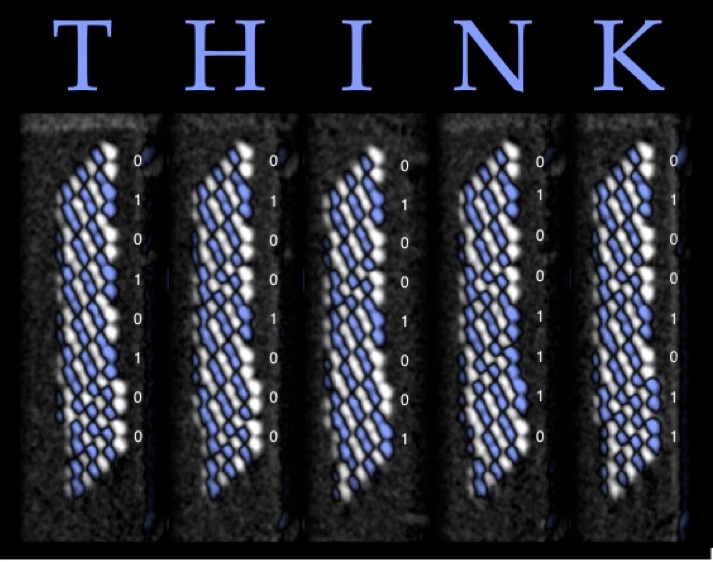 Ahead of an article to be published in tomorrow’s Science, IBM Research today announced the development of the world’s smallest magnetic memory bit by its Almaden research staff. At low temperatures, the magnetic storage approach requires only 12 magnetic atoms — making it at least 100 times denser than today’s hard disk drive and solid state memory chips — and is the result of antiferromagnetism.
Ahead of an article to be published in tomorrow’s Science, IBM Research today announced the development of the world’s smallest magnetic memory bit by its Almaden research staff. At low temperatures, the magnetic storage approach requires only 12 magnetic atoms — making it at least 100 times denser than today’s hard disk drive and solid state memory chips — and is the result of antiferromagnetism.
From the press release:
Punctuating 30 years of nanotechnology research, scientists … have successfully demonstrated the ability to store information in as few as 12 magnetic atoms. This is significantly less than today’s disk drives, which use about one million atoms to store a single bit of information. The ability to manipulate matter by its most basic components — atom by atom — could lead to the vital understanding necessary to build smaller, faster and more energy-efficient devices [more after the jump].
While silicon transistor technology has become cheaper, denser and more efficient, fundamental physical limitations suggest this path of conventional scaling is unsustainable. Alternative approaches are needed to continue the rapid pace of computing innovation.
By taking a novel approach and beginning at the smallest unit of data storage, the atom, scientists demonstrated magnetic storage that is at least 100 times denser than today’s hard disk drives and solid state memory chips. Future applications of nanostructures built one atom at a time, and that apply an unconventional form of magnetism called antiferromagnetism, could allow people and businesses to store 100 times more information in the same space.
“The chip industry will continue its pursuit of incremental scaling in semiconductor technology but, as components continue to shrink, the march continues to the inevitable end point: the atom. We’re taking the opposite approach and starting with the smallest unit — single atoms — to build computing devices one atom at a time.” said Andreas Heinrich, the lead investigator into atomic storage…
For more — including a detailed breakdown of how it works — check out the press release, the latest news stories, and a copy of tomorrow’s Science containing the original research article.
(Contributed by Erwin Gianchandani, CCC Director)









